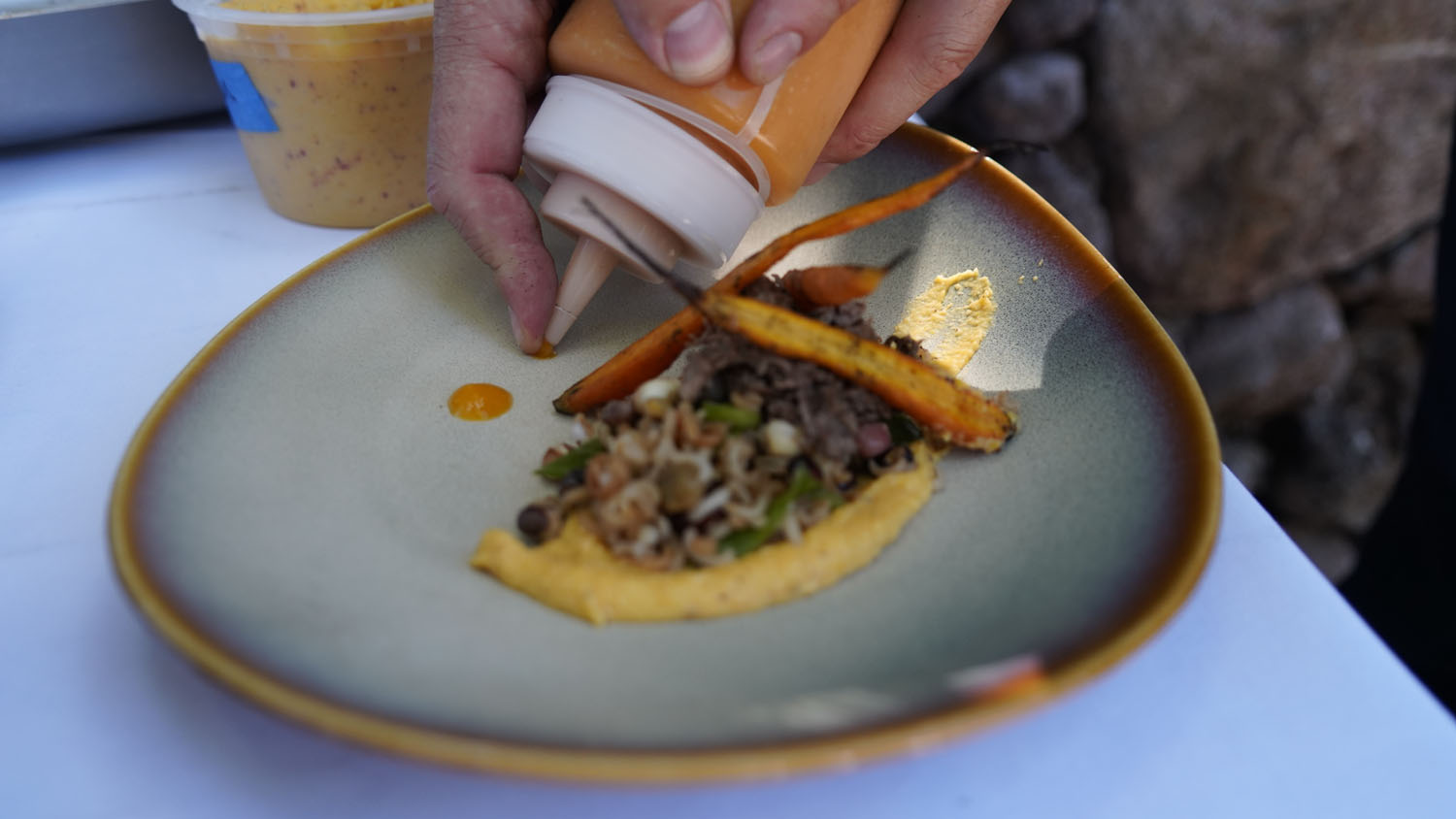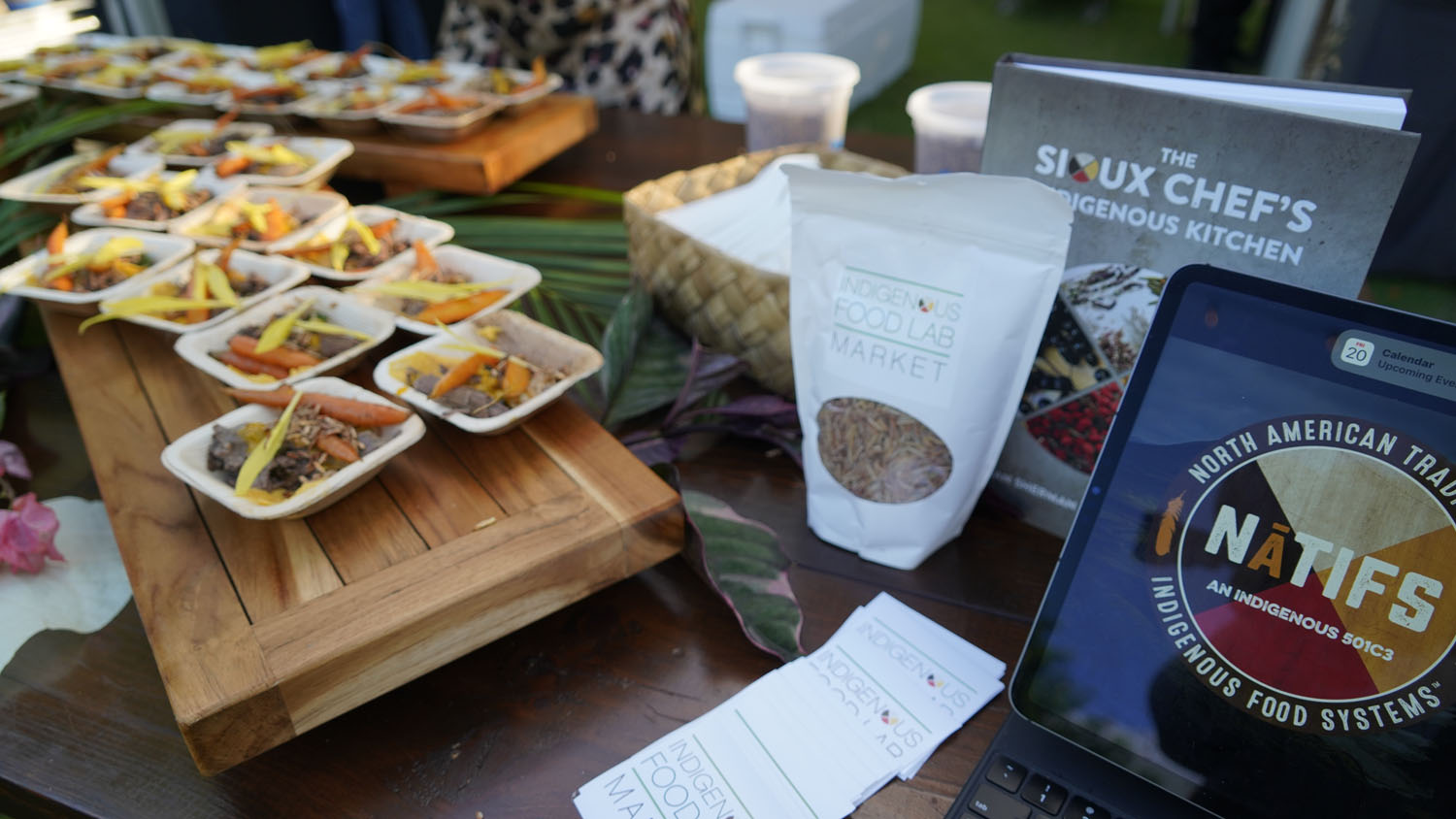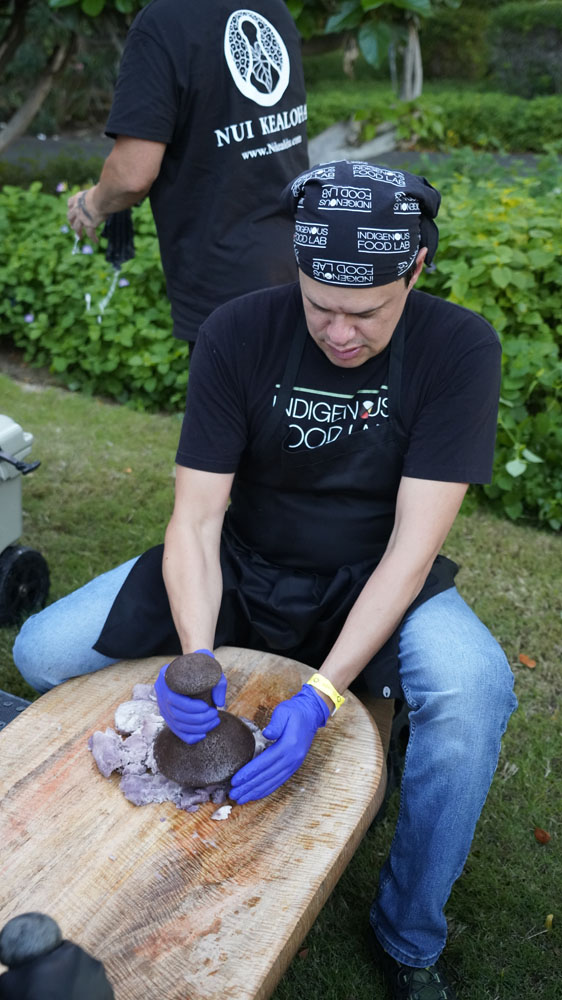Honolulu, Hawaii, whether you have visited or not, is one of the most recognizable place names in the world.
Immortalized culturally from The Brady Bunch to the origin place of surfing, it is one of the most heavily touristed places in the world, receiving around a half million visitors monthly, for a population that makes up only a million residents on the entire island of O’ahu.
These tourists spend billions, with the large majority of the profits ending up in the pockets of multinational companies.
And yet, nearly half of Native Hawaiian households with children are food insecure.
Sean has visited Oahu twice this year, forging relationships with partner organizations in the effort to assist with food sovereignty efforts on the island. O’ahu is one of the locations that NATIFS has designated as a potential satellite location for Indigenous Food Lab.
Highlights from these visits include his friendship with Kealoha Domingo of Nui Kealoha Hawaii, a Native Hawaiian chef with a lifetime of roots on his native O’ahu.
Kealoha and his wife Kalaiunuola have dedicated their work to revitalizing Native Hawaiian foodways on the islands, and are raising their four boys as culturally Hawaiian as possible.
“The Hawaiian food that we mostly revere is plantation food,” Kealoha reminds us. Foods brought to the Island by people interested in cash crops rather than nutrition health. He speaks of iconic products like sugar, macadamia nuts, coffee, and of course pineapple– none of which are native to the islands.
At his culturally relevant tables, Kealoha prominently features taro (kalo) poi– a paste produced from taro, one of Hawaii’s most sacred staple foods– sweet potato, ti leaves, and breadfruit (ulu)– a species of flowering tree that was once prolific on the islands and provided sustenance for thousands. One tree can produce up to a ton of fruit annually.
The couple’s work honors what they call “the sanctity of food.”
“It’s teaching our kids about traditional values that we rediscovered– beliefs like we are descended from the taro plant.”
Both Sean and Kealoha were featured at the Hawaii Food & Wine Festival at the breathtaking Mauna Kea Resort on The Big Island. This year’s festival highlighted Indigenous chefs, also including Monique Fiso of Hiakai in Wellington, New Zealand; and Crystal Wahpepah of Wahpepah’s Kitchen in Oakland, California. Each chef cooked a dish representing their Native cuisine, and Sean’s included hand harvested wild rice, nixtamalized corn, and braised venison.
Kealoha’s team demonstrated poi pounding, processing taro with a large stone and wooden board to produce this highly nutritious paste that was a sacred staple food for the islands for thousands of years, and continues to be an important part of Native nutrition.
Kealoha and several of his colleagues also presented an awa ceremony honoring the chefs of the festival. Awa is a beverage made from a medicinal plant of the same name that can produce a relaxant or stress reducer. It’s served at ceremonies and special occasions, accompanied by traditional Hawaiian chants.
Sean and Hannah Hostetter, NATIFS projects and organizational development department lead, also visited Papahaha Kualo at Wipao, where Kealoha began his own Native Hawaiian cultural rediscovery about 20 years ago. He says it was the first place he heard Hawaiian being spoken in fluency, and it touched something in him– he called it a “soul song.”
“I just kept coming back.”
Papahana Kuaola is located on 70 acres of cultural, conservation, and agricultural land. It is an important site of mythology, history and Native culture. It is likely that ancestors, chiefs, and gods considered it a sacred space, though Hawaiians consider the entirety of the islands as sacred space. Taro is also grown on this conservation land, perpetuating this important crop.
Another of Hawaii’s most important crops, arriving with Polynesians thousand of years ago, is coconut– also becoming out-of-reach food sustenance for Hawaiians, thanks to the widespread notion that coconut is considered an ornamental (and a liability, because of the risk of falling coconut injury) and the nuts are mostly cut down before they are mature enough to eat. This is highly unfortunate in current times when water shortages are becoming an all too common reality– coconut water can be substituted for water when water is inaccessible.
Manulani Alui Meyer is an Indigenous Epistemologist and co-founder of Niu Now, a community cultural agroforestry movement emerging to affirm the importance of coconut (niu) and uluniu, coconut groves. She and her partner Ngahiraka hosted Sean at a dinner highlighting coconut in every dish.
“The coconut tree or niu is the fundamental practice of food sovereignty or security,” says Meyer, who goes by “Aunty Manu,” aunty being a term of endearment and respect for any woman who is your elder in Hawaii.
“A return to freedom with freedom. It means we’ve regained a footing in a natural system, that allows us to eat once again more simply, to share once again without money, and stimulates a sharing economy that allows us to empower ourselves.”
In June, she will be hosting an international coconut conference in Honolulu, honoring the Hawaiian heritage of the tree, dedicating two days to the care, stories, beauty, fiction, art, and production of coconuts.
Rick Barboza, founder of Hui Kū Maoli Ola, the world’s largest Native Hawaiian plant nursery, said he wanted to bring back Hawaii’s plant life– Hawaii is the endangered and extinction capital of the world– as a path towards bringing back ocean and wildlife. Over 90 percent of Hawaii’s plant life is not native to the islands.
Sean and Hannah toured the nursery, and learned how Hawaii’s ecosystems have been degraded over the past two centuries thanks to introduced livestock and commercial agriculture monocrops (sugarcane, pineapple) as well as overdevelopment and the introduction of invasive species, all of which compile and contribute to space, sunlight, and water shortages that deteriorate ecosystems.
He and his partners have been lovingly bringing back Hawaii’s plant life for 25 years– he said that their plants used to fit on one picnic table– and even then they were the world’s largest Hawaiian plant nursery. Today, they’re able to offer and sell over 100 different species of plants.
During the team’s time on the Islands, Hannah also met with chefs and foragers in preparation for a 2024 video series partnership. Hawaii is a highlighted region in the third season of NATIFS’ FDPIR (Food Distribution Program on Indian Reservations) video series that is currently in the production stages. In this video series, NATIFS works with partner Indigenous chefs and foragers to develop recipes and accompanying cooking videos that highlight how to combine local Indigenous forageable foods with foods available through Federal emergency food programs. Seasons One and Two of FDPIR video series can now be found on NATIFS’ Indigenous Food Sovereignty Initiative webpage or YouTube channel.
Sean says that during an upcoming visit, he would like to work with the team at Hui Kū Maoli Ola to identify which plants and botanicals have edible qualities, and how they can be incorporated into everyday eating.


















